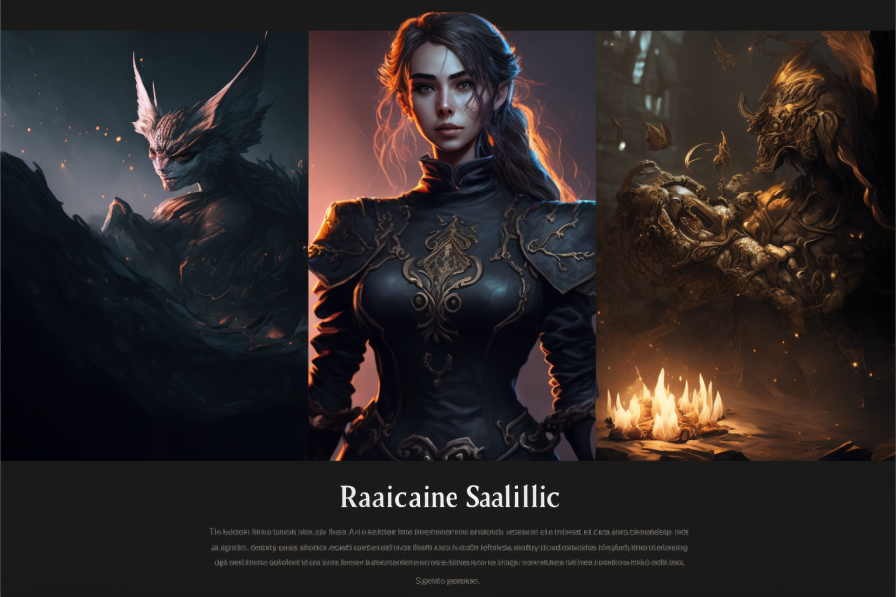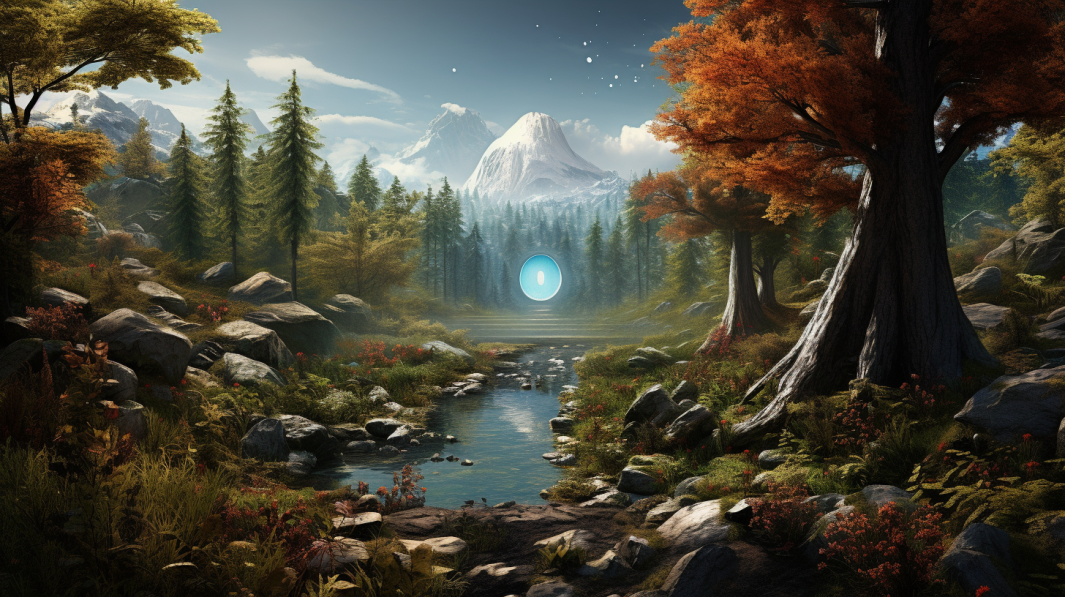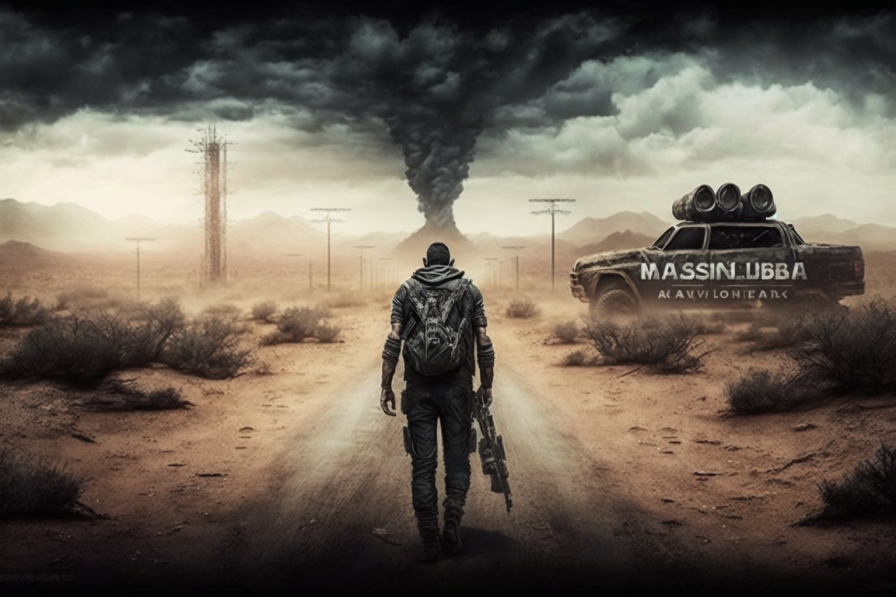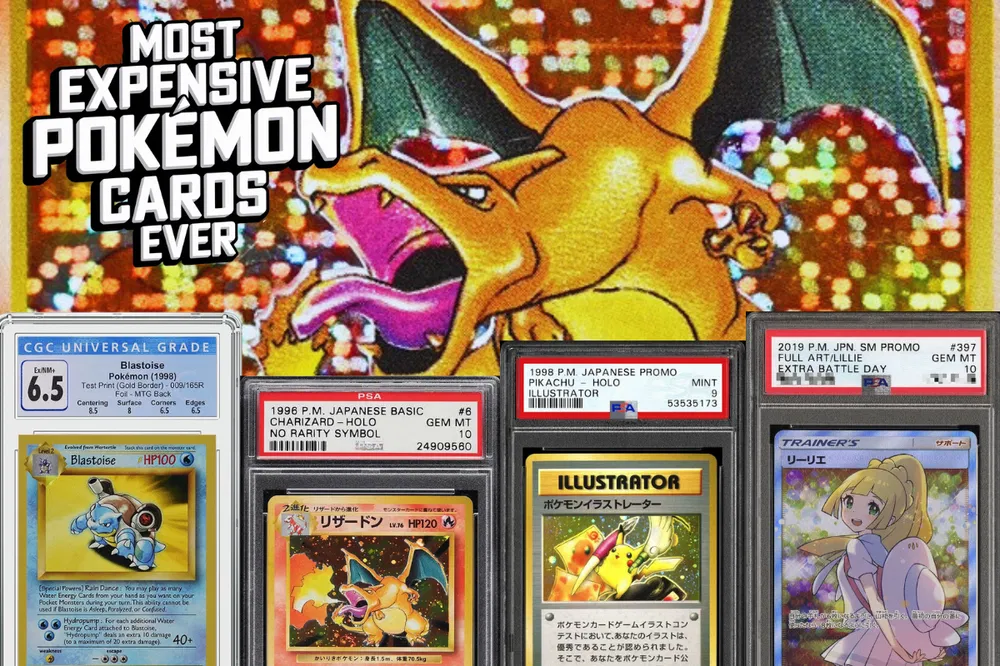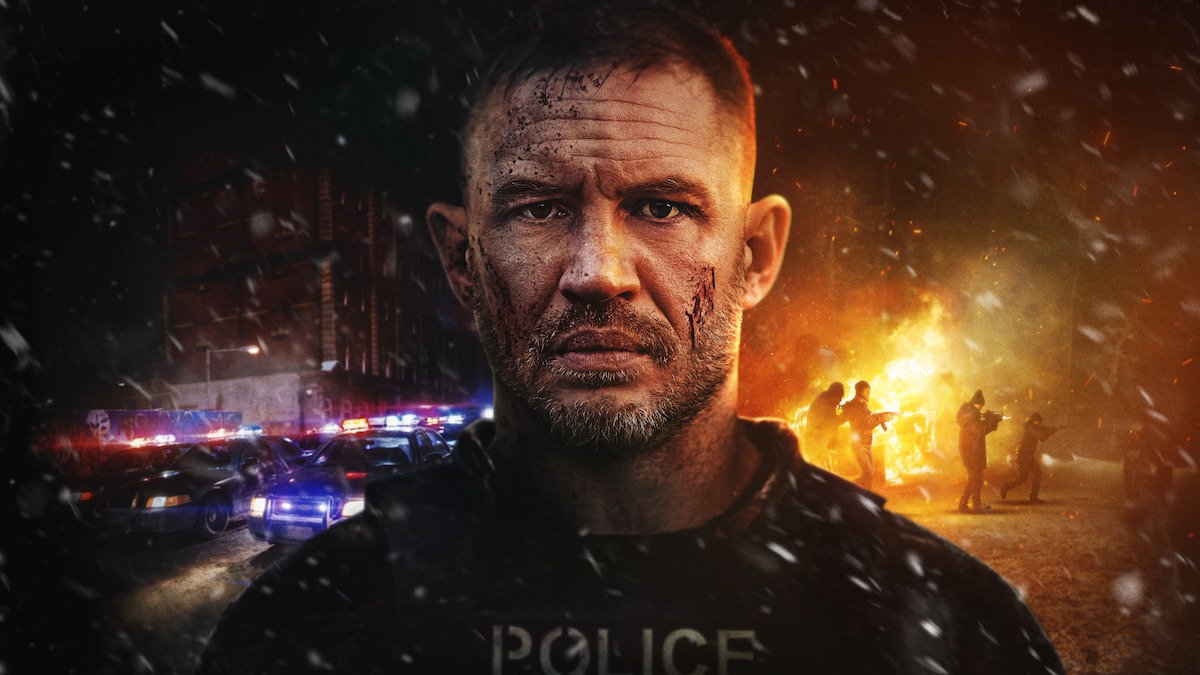The world of video games has seen a remarkable transformation in recent years, with the advent of massive, interconnected virtual worlds where players from all corners of the globe can unite and embark on epic adventures. Massively Multiplayer Online Role-Playing Games, or MMORPGs, have become a dominant force in the gaming industry, captivating millions of players with their intricate stories, immersive worlds, and boundless possibilities. Behind every successful MMORPG, there is a complex and arduous development process that takes the game from a mere concept to a fully-fledged, living universe. In this article, we’ll delve into the intricate journey of full-cycle MMORPG game development, from the inception of an idea to the exhilarating moment of launch.
Conceptualization and MMORPG Pre-Production
Define the MMORPG Game Design Concept
The MMORPG landscape is an ever-evolving playground, and embarking on a new MMORPG game development project demands the birth of a game concept that not only distinguishes itself but also resonates with players on a profound level. Here, we delve deeper into the process of defining an MMORPG game concept and examine how it can set the stage for an unforgettable gaming experience.
- Originality and Uniqueness: In the realm of MMORPGs, where countless worlds and adventures await players, originality is paramount. Your game concept should break free from the clichés and offer a fresh, innovative experience that sets it apart. It’s the seed from which the entire MMORPG will flourish.
- Player Engagement: The key to a successful MMORPG game development concept is its ability to captivate players even before they set foot in the game world. It should evoke excitement and anticipation, making potential players eager to explore what lies ahead. The concept should be so compelling that it piques the imaginations of gamers, leaving them craving to dive into your virtual universe.
- World-Building and Lore: Often, the heart of a captivating MMORPG game concept lies in its world-building and lore. Whether it’s a meticulously crafted fantasy realm with its own pantheon of gods or a gritty, post-apocalyptic science fiction setting, the concept should offer a rich and immersive backdrop for the player’s adventures.
- Unique Gameplay Mechanic: Beyond the setting, a unique gameplay mechanic can be the cornerstone of your MMORPG game concept. Whether it’s a groundbreaking combat system, a novel crafting mechanic, or an innovative approach to player interactions, this gameplay element can be the defining feature that sets your MMORPG apart from the rest.
| Concept | Game | Provider/Developer | Key Highlights |
|---|---|---|---|
| Fantasy Realm | World of Warcraft | Blizzard Entertainment | Iconic MMO with raids, PvP, expansions like Dragonflight |
| Final Fantasy XIV | Square Enix | Strong story, cross-platform play, massive expansions like Endwalker | |
| Lineage II | NCSOFT | Hardcore PvP-focused, beautiful medieval-fantasy setting | |
| RuneScape | Jagex | Browser-based classic, deep lore, and sandbox elements | |
| Science Fiction | EVE Online | CCP Games | Player-driven economy, space politics, massive space battles |
| Star Wars: The Old Republic | BioWare/EA | Cinematic storylines, Light vs. Dark morality, voice-acted quests | |
| Phantasy Star Online 2 | SEGA | Futuristic action combat, instanced multiplayer missions | |
| Anarchy Online | Funcom | One of the first sci-fi MMOs, deep character development | |
| Post-Apocalyptic | Fallout 76 | Bethesda Game Studios | Open-world survival, set in Fallout universe, frequent content updates |
| Fallen Earth | Little Orbit | Hybrid FPS/MMO with crafting and territory control | |
| The Day Before (TBA) | Fntastic | Zombie survival MMO with PvPvE mechanics (pending release) | |
| Narrative-Driven | The Lord of the Rings Online | Standing Stone Games | Deep lore, Middle-earth setting, story-rich quests |
| Black Desert Online | Pearl Abyss | Cinematic cutscenes, high-end character visuals, sandbox freedom | |
| Star Wars: The Old Republic | BioWare | Choice-driven narrative, multiple class storylines | |
| Final Fantasy XIV | Square Enix | Expansive storyline with cutscenes and character arcs | |
| Unique Mechanics | Guild Wars 2 | ArenaNet | No subscription, dynamic events, weapon-based skill system |
| The Elder Scrolls Online | ZeniMax Online Studios | Action combat, open-ended exploration, strong mod support | |
| Albion Online | Sandbox Interactive | Full-loot PvP, player-controlled economy, mobile and PC support | |
| Mortal Online 2 | Star Vault | Full PvP/full loot sandbox, first-person perspective | |
| Sandbox World | ArcheAge | XLGames/Kakao Games | Sailing, trade runs, castle sieges, player housing |
| Wurm Online | Code Club AB | Hardcore sandbox with terraforming, crafting, and realistic survival | |
| Life is Feudal: MMO | Bitbox Ltd. | Medieval sandbox sim with guilds and large-scale building | |
| Mobile-Friendly | Old School RuneScape | Jagex | Fully playable cross-platform with mobile and PC sync |
| AdventureQuest 3D | Artix Entertainment | Cross-platform MMORPG with real-time updates | |
| Order & Chaos Online | Gameloft | Early mobile MMORPG with fantasy setting and traditional combat | |
| PvP-Focused | Dark Age of Camelot | Mythic Entertainment/Broadsword | Realm-vs-Realm system, 3-faction PvP innovation |
| Shadowbane | Wolfpack Studios | Guild warfare and territory conquest | |
| Crowfall (shutdown) | ArtCraft Entertainment | PvP campaigns with player-elected kings and warlords | |
| Anime-Inspired | Sword Art Online: Integral Factor | Bandai Namco | Based on the SAO series, action RPG combat |
| Tower of Fantasy | Hotta Studio | Anime-style open-world sci-fi MMORPG | |
| Blue Protocol (JP/Global Beta) | Bandai Namco | Genshin-style art with MMO structure | |
| Casual/Social | Habbo Hotel | Sulake | Pixel-art social MMORPG with trading and events |
| Club Penguin Online (shutdown) | Disney Fan Recreation | Child-friendly social MMO with games and parties | |
| Toontown Rewritten | Community-Run (Disney IP) | Humor-filled combat, mini-games, and cooperative missions | |
| Crafting & Economy | New World | Amazon Games | Territory wars, deep gathering/crafting system, seasonal content |
| Dual Universe | Novaquark | One-shard universe with player-built ships, cities, and markets | |
| Gloria Victis | Black Eye Games | Realistic medieval economy and guild-run towns | |
| Retro/Classic Revival | EverQuest | Daybreak Game Company | One of the first 3D MMOs, still supported with updates |
| Ultima Online | Origin Systems/Broadsword | First graphical MMO, player housing and open PvP | |
| Project 1999 | Community-run | Emulates classic EverQuest experience with nostalgic elements | |
| Indie & Experimental | Book of Travels | Might and Delight | “TMORPG” (tiny multiplayer), hand-painted aesthetic |
| Foxhole | Siege Camp | Persistent world war with player-built logistics and battles | |
| BitCraft (in development) | Clockwork Labs | Community crafting, large-scale settlement building |
The table above showcases how various MMORPG concepts have been brought to life in some of the most iconic MMORPGs. Each concept has its unique appeal and has played a significant role in the success of these games. These concepts have captured the imaginations of players and set the stage for immersive and engaging MMORPG experiences.
Market Research
Understanding your target audience is a pivotal step in the journey of full-cycle MMORPG game development, as it forms the bridge between your innovative concept and the preferences of potential players. Here, we delve deeper into the intricate world of market research and how it empowers game developers to create MMORPGs that resonate with the gaming community.
- Player Desires and Preferences: Market research begins with a quest to understand the intricacies of player desires and preferences. What drives players to MMORPGs? Are they seeking immersive storytelling, challenging gameplay, or a vibrant player community? Through surveys, focus groups, and analysis of player reviews, developers can pinpoint the elements that hold the most appeal.
- Competitive Landscape: An essential aspect of market research is gaining insight into the competitive landscape. Analyzing existing MMORPGs, their strengths, and their weaknesses is critical. This enables you to identify gaps in the market and areas where your game can excel.
- Feature and Content Demand: Identifying the features and content in high demand is a cornerstone of market research. Are players craving robust player-versus-environment (PvE) experiences, intricate player-versus-player (PvP) combat, or a dynamic crafting system? By discerning these preferences, you can tailor your game to meet, and ideally exceed, player expectations.
- Player Feedback: Listening to the player community is an invaluable aspect of market research. Engage with potential players through forums, social media, and gaming communities. Take note of their feedback on what they love or dislike about current MMORPGs, as this feedback can guide your decisions.
- Monetization Strategies: Understanding the player’s tolerance for various monetization strategies is crucial. Some MMORPG game development thrive with subscription models, while others succeed with free-to-play and microtransactions. Your research will guide your choice of business model and how it aligns with player expectations.
- Demographics and Player Behavior: Market research should also delve into player demographics and behavior. This includes age groups, preferred gaming platforms, playtime patterns, and gaming habits. These insights help tailor the game to suit the lifestyle and habits of your intended audience.
The Role of Market Research in MMORPG Game Development
Market research is not just about understanding the market; it’s about shaping your game to meet the expectations and desires of your target audience. It is the compass that guides your design choices, content development, and overall game direction. When harnessed effectively, market research empowers developers to create MMORPGs that are not only unique but also resonate deeply with players, fostering long-lasting communities and memorable gaming experiences.
Design Document
Once you’ve defined your captivating MMORPG game design concept and conducted thorough market research, the next crucial step in the development journey is to create a comprehensive design document. This document serves as the blueprint that shapes the very essence of your MMORPG, defining its mechanics, lore, quests, and overarching narrative. Here, we’ll delve deeper into the significance of the design document and how it acts as a guiding beacon for the entire development team.
- Blueprint for Creativity: The design document is where the abstract ideas and concepts begin to take shape. It outlines the fundamental building blocks of your MMORPG game development, providing a detailed description of how the game will function, look, and feel. This blueprint is essential to ensure that the final product aligns with the original vision.
- Mechanics and Systems: The design document delves into the intricate mechanics and gameplay systems that form the core of your MMORPG. It details combat mechanics, character progression, crafting systems, and more. This level of detail ensures that every aspect of the game is well-thought-out and interconnected.
- World-Building and Lore: A captivating MMORPG game design often relies on the depth of its world and lore. The design document should describe the history, geography, cultures, and societies within your game world. This rich backdrop provides the context for player adventures, immersing them in a living, breathing universe.
- Quests and Narrative: The MMORPG’s quests and overarching narrative are at the heart of the player experience. The design document fleshes out the main storyline, side quests, and character arcs. It outlines the narratives that will drive player engagement, making sure that they are not only compelling but also contribute to the game’s world-building.
- Game World Layout: Beyond lore, the design document also covers the layout of the game world. It defines the locations, cities, dungeons, and zones that players will explore. World layout influences gameplay dynamics, creating a seamless and engaging environment for players.
Example: Design Document for “Epic Kingdoms Online”
Consider the fictional MMORPG game development of “Epic Kingdoms Online.” In the design document for this game, it outlines:
- Game Mechanics: A combat system that combines action elements with tactical strategy, allowing for fluid and engaging battles. Players can also engage in various crafting and trading systems to build their kingdoms.
- World-Building and Lore: The rich and expansive world of “Epic Kingdoms” is a high-fantasy realm where three rival kingdoms vie for control. The lore details the history, magic systems, and the complex relationships between these kingdoms.
- Quests and Narrative: The main questline revolves around a mysterious artifact that has the power to shift the balance of power. Players will uncover the truth behind this artifact through a series of story-driven quests, which also weave into the broader political and cultural struggles of the game world.
- Game World Layout: The design document lays out a diverse landscape, featuring lush forests, towering mountains, treacherous swamps, and bustling cities. Each region presents unique challenges and opportunities for players.
The design document for “Epic Kingdoms Online” serves as the foundation upon which the entire development team will build. It ensures that every team member, from artists to programmers, shares a common understanding of the game’s vision, fostering synergy and coherence throughout the development process.
Team Formation
Game development is a multidisciplinary effort that requires a team of talented individuals with diverse skill sets. Assemble a team of artists, programmers, designers, writers, and more, all passionate about the project. A cohesive and motivated team is the foundation for success in full-cycle MMORPG game development.
Prototyping and Game Design in MMORPG Game Development
After formalizing the game concept through a design document, the next crucial phase in the full-cycle MMORPG game development is prototyping and game design. This stage is where the game concept takes on tangible form, with a focus on creating a functional prototype, shaping core gameplay mechanics, character classes, and weaving a rich narrative that immerses players deeply into the game world.
Building a Prototype
Prototyping is the first step in bringing your MMORPG to life. It involves creating a proof of concept or a vertical slice of the game. Here’s why it’s a vital part of the MMORPG game development process:
- Testing Core Ideas: Prototypes allow you to test the core ideas and mechanics of your game. You can quickly ascertain whether your gameplay concepts are fun and functional before investing substantial resources into full development.
- Identifying Issues: The prototype phase helps you identify potential issues and challenges early on. It can reveal design flaws, technical constraints, or gameplay imbalances that may be harder and costlier to rectify later in the development process.
- Stakeholder Communication: Prototypes serve as an excellent way to communicate your vision with stakeholders, team members, and investors. It provides a tangible example of the game’s potential and can generate excitement and support for the project.
Game Design
With a successful prototype in hand, the game design phase becomes the focal point of full-cycle MMORPG game development. This stage encompasses a comprehensive process that defines the mechanics, character classes, and overall structure of your game:
- Mechanics Refinement: Based on the feedback and insights gathered from the prototype, you can refine and expand the gameplay mechanics. This is where you further polish combat systems, crafting mechanics, character progression, and any unique features that define your MMORPG.
- Character Classes and Roles: In full-cycle MMORPG game development, character classes are often the foundation of gameplay diversity. The game design phase defines the roles, abilities, and attributes of these classes, ensuring that each one offers a unique and balanced player experience.
- Overall Structure: During game design, the overall structure of the MMORPG takes shape. This includes defining the player-versus-environment (PvE) and player-versus-player (PvP) aspects, world exploration, and overarching objectives. It’s where you create the scaffolding that supports the game’s complexity.
World-Building and Lore
One of the hallmark attractions of MMORPG game development is the immersive and richly detailed game worlds they offer. This stage focuses on creating the backdrop against which players will embark on their adventures:
- Detailed World-Building: World-building involves crafting the geography, cultures, societies, and history of the game world. It’s about creating a diverse and visually stunning landscape that serves as the canvas for player exploration.
- Compelling Backstory: A captivating backstory adds depth and context to the game world. It breathes life into characters, factions, and locations, making them more than just visual elements. A well-crafted narrative provides players with a sense of purpose and belonging in the game world.
Example: “RealmQuest Online”
In the prototyping phase of the fictional MMORPG “RealmQuest Online,” the full-cycle MMORPG game development focused on creating a playable vertical slice of the game that showcased fundamental mechanics like dynamic combat, spellcasting, and character progression. Once the prototype was tested and refined, the game design phase expanded on these mechanics, defined character classes such as wizards, knights, and rogues, and structured the game around a central conflict involving ancient magical relics.
The world-building and lore creation for “RealmQuest Online” brought the game’s fantasy realm to life, complete with distinct regions, races, and an intricate history of rival kingdoms. The game design and world-building were closely intertwined, ensuring that gameplay and narrative elements meshed seamlessly.
Development
The development phase is where the MMORPG truly comes to life. It is marked by the hard work and dedication of programmers, artists, sound designers, and the entire development team. This phase involves technical development, asset creation, and a continuous cycle of iteration and playtesting to ensure the game meets the high standards expected in the MMORPG genre.
Technical Development
In the technical development phase, the underlying framework of your MMORPG is constructed. This includes the creation and optimization of various technical elements:
- Game Engine: Programmers work diligently to build or customize a game engine that can support the massive world and complex interactions of an MMORPG. The engine must handle networking, physics, and other core systems to ensure a seamless gaming experience.
- Networking Code: Developing a robust and efficient networking code is paramount. It allows thousands of players to connect, interact, and share experiences within the virtual world. Minimizing latency and ensuring a lag-free environment is a central challenge.
- Server Infrastructure: Setting up the server infrastructure is a critical component of MMORPG development. It involves configuring and maintaining the servers that host the virtual world, manage player data, and support in-game interactions.
Asset Creation
Assets are the visual and auditory building blocks of your MMORPG. This stage is where artists and sound designers bring the game to life with attention to detail and creativity:
- 3D Models and Textures: Artists create character models, environmental assets, buildings, and objects that populate the game world. These 3D models must be detailed, visually stunning, and optimized for performance.
- Animations: Animations breathe life into characters and creatures. They need to be fluid and responsive, enhancing the player’s immersion in the game.
- Textures: Textures provide depth and realism to the game’s visuals. High-quality textures give environments and characters a sense of depth and detail.
- Audio Landscape: Sound designers craft the auditory experience of the game, from ambient sounds to epic music and character voiceovers. The audio landscape plays a vital role in immersion and storytelling.
Iteration and Playtesting
Iteration and playtesting are ongoing processes that ensure the MMORPG is polished, balanced, and free of major issues:
- Continuous Improvement: Developers and testers play the game regularly, identifying issues, imbalances, and bugs. They make continuous improvements, refining gameplay, resolving technical issues, and enhancing the overall experience.
- Balance and Pacing: Achieving a balance in gameplay is a core objective. Developers fine-tune character progression, combat systems, and economy to create an engaging and fair experience. Pacing is critical to provide players with a sense of achievement and progression.
- User Experience Enhancements: The user interface, including menus, HUD elements, and in-game controls, is continuously refined to ensure ease of use and accessibility for players.
- Bug Fixes: The identification and resolution of bugs are an ongoing process. Developers work diligently to ensure that the MMORPG is as bug-free as possible for the player community.
Example: “Eternal Realms”
In the technical development phase of the fictional MMORPG “Eternal Realms,” the programming team dedicated their efforts to creating a robust game engine capable of handling a seamless open world with thousands of players. Simultaneously, network engineers focused on minimizing latency and optimizing server architecture for an engaging multiplayer experience.
The art team brought “Eternal Realms” to life with meticulous attention to detail, crafting rich 3D models for characters, monsters, and environments. Sound designers composed a dynamic and evocative soundtrack that would draw players deeper into the game world.
Content Creation and Storytelling
Once the technical foundation is in place, the MMORPG game development process shifts its focus to content creation and storytelling, two critical aspects that immerse players in the game’s world, motivate them to explore, and keep them engaged for hours on end.
Quests and Narratives
Storytelling at the Core: MMORPGs are renowned for their immersive narratives. Engaging quests and overarching storylines provide players with a sense of purpose and direction within the game world. Here’s how quests and narratives play a pivotal role in MMORPG development:
- Quest Design: Quests serve as the backbone of player progression. They come in various forms, including main story quests, side quests, and dynamic events. Well-designed quests feature compelling narratives, intriguing objectives, and meaningful rewards.
- Lore Integration: The game’s lore is intricately woven into the quests. It adds depth to the world, allowing players to explore and discover the game’s history, cultures, and conflicts while progressing through quests.
- Emotional Engagement: Effective storytelling creates emotional engagement. Players should form connections with in-game characters and experience a range of emotions, from excitement and triumph to empathy and sorrow.
- Dynamic Narratives: MMORPGs often introduce dynamic storytelling elements, such as choices and consequences, that let players shape the outcome of their character’s journey. These choices provide a sense of agency and replayability.
NPCs and Character Development
The Heart of the Game World: Non-player characters (NPCs) are the lifeblood of an MMORPG’s world. They interact with players, provide quests, and contribute to the game’s narrative depth. Here’s how they enhance the player experience:
- Memorable NPCs: Creating NPCs with distinct personalities, motivations, and story arcs makes the game world feel alive. Memorable characters like mentors, villains, and allies add depth to the player’s journey.
- Relatable Backstories: Relatable backstories and character development make NPCs more than quest-givers; they become integral to the game’s narrative tapestry. Understanding the struggles and ambitions of NPCs enhances player immersion.
- Player Interaction: Some MMORPGs introduce mechanics that enable players to build relationships with NPCs, affecting the game’s narrative and providing additional depth to the in-game world.
Balancing and Pacing
Creating a Dynamic Gameplay Experience: Maintaining balance and pacing in an MMORPG is an ongoing effort that keeps players engaged. Here’s how these factors contribute to the player experience:
- Challenging Yet Fair: Balancing combat and character progression is essential. The gameplay should be challenging enough to encourage player growth and cooperation but also fair to prevent frustration.
- Progression Milestones: Proper pacing ensures that players always have meaningful goals. Whether it’s leveling up, acquiring better gear, or completing epic quests, there should be a sense of progression and accomplishment at every turn.
- Content Accessibility: Developers should balance the accessibility of content to cater to both casual and dedicated players. This balance ensures that all types of players can enjoy the game and participate in a variety of activities.
Example: “ChronoWings: Realm of Legends”
In “ChronoWings: Realm of Legends,” the storytelling is at the forefront of the gaming experience. The main narrative follows a time-bending quest to save the world from an impending disaster. Players encounter NPCs with intricate backgrounds and story arcs, such as a wise mage seeking redemption and a mischievous rogue with hidden motives.
The game’s quests are not mere tasks but chapters in an ever-evolving story. Players make choices that influence the outcome of the narrative, adding a layer of agency and replayability. Balancing the game involves regular adjustments to difficulty levels, pacing, and player progression to provide a satisfying and enduring gaming experience.
Multiplayer and Networking
The core essence of MMORPGs lies in their multiplayer and networking features. These elements are vital to enable players to interact, collaborate, and compete in a shared virtual world. In this section, we will explore the technical aspects that underpin this critical component of MMORPG development.
Server Infrastructure
The Backbone of Online Worlds: Robust server infrastructure is the backbone of any MMORPG, enabling the creation of a shared online world where hundreds or even thousands of players can coexist and interact. Here’s why server infrastructure is pivotal:
- Server Design: The design of server architecture is a foundational step. It involves configuring servers to handle massive player loads, manage in-game data, and support various functionalities like character data, chat, and combat.
- Scalability: MMORPGs must be scalable to accommodate a growing player base. Developers often use load balancing techniques and cloud-based solutions to ensure the game can handle increasing numbers of players without performance degradation.
- Maintenance and Updates: Ongoing server maintenance and updates are critical to addressing technical issues, ensuring server stability, and rolling out new content. This process requires a dedicated team to monitor and optimize server performance.
Latency and Lag Mitigation
Creating a Seamless Gaming Experience: To maintain a responsive and lag-free environment, minimizing latency is a top priority. Players expect fluid and instantaneous interactions in an MMORPG. Here are some techniques used to enhance the player experience:
- Server-Side Prediction: Server-side prediction techniques predict player actions and provide a seamless experience even when there’s network latency. This ensures that player movements and interactions appear smooth and accurate.
- Lag Compensation: Lag compensation measures account for network delays by adjusting game events to match the perceived timing of players. This technique creates a fairer and more balanced playing field in a multiplayer environment.
- Geographical Server Placement: Placing servers in strategic locations worldwide helps minimize latency for players in different regions. This is especially important for providing an equitable experience for players with varying geographical distances to the game servers.
Anti-Cheat Measures
Preserving Fair Play: Maintaining a fair and cheat-free gaming environment is paramount in MMORPGs. Cheating not only disrupts gameplay but also undermines player trust. Here’s how developers tackle this challenge:
- Effective Anti-Cheat Systems: Implementing comprehensive anti-cheat systems that detect and prevent cheating is crucial. These systems include cheat detection algorithms, behavior monitoring, and reporting mechanisms.
- Vigilant Monitoring: Continuous monitoring of player behavior and in-game actions is essential to identify and take action against cheaters. This may involve player reports, automated flagging, and dedicated anti-cheat teams.
- Penalties and Deterrents: Developers employ penalties such as temporary bans or permanent account suspensions to deter cheaters. This ensures that the integrity of the game environment is preserved.
Example: “Galactic Conquest Online”
In the development of “Galactic Conquest Online,” the server infrastructure was meticulously designed to accommodate thousands of players exploring a vast and dynamic galaxy. Multiple server clusters were set up in different regions to provide low-latency experiences for players across the globe.
Latency and lag mitigation techniques, including server-side prediction and lag compensation, were implemented to ensure that space battles, trading, and interactions between players happened seamlessly, even in the face of variable network conditions.
Anti-cheat measures were also a top priority, with dedicated teams of moderators and automated anti-cheat systems to identify and penalize players engaging in unfair practices, such as exploiting or cheating in space battles.
Beta Testing and Community Engagement
The phases of beta testing and community engagement are pivotal steps leading up to the official launch of an MMORPG. They serve as essential processes for refining the game, building a player community, and creating anticipation in the gaming world.
Closed and Open Beta Testing
Refining the Player Experience: Beta testing involves inviting players to explore the game before its official launch. This phase can be divided into two key stages: closed and open beta testing.
- Closed Beta Testing: In the closed beta phase, a limited number of pre-selected players are invited to participate. It’s an opportunity to gather valuable feedback from a controlled group of players and identify and address any remaining issues, from technical glitches to gameplay imbalances.
- Open Beta Testing: The open beta phase widens the player pool, allowing a larger audience to participate. This stage serves to stress-test servers, provide additional feedback, and generate buzz around the game. It’s often seen as a marketing tool, offering a taste of the MMORPG to a broader audience.
- Feedback and Issue Resolution: Throughout both phases, the development team collects feedback from players, identifying bugs, gameplay imbalances, and other issues. This information is crucial for fine-tuning the game and ensuring a smoother launch.
- Building a Player Community: Beta testing also plays a significant role in community building. It brings players together, fosters a sense of belonging, and generates excitement for the upcoming launch.
Community Management
Cultivating a Thriving Player Community: A thriving and engaged player community is vital for the long-term success of an MMORPG. Community managers are key figures in maintaining player relations, offering support, and ensuring a positive gaming environment.
- Player Support: Community managers act as a bridge between players and the development team. They address player concerns, provide technical support, and relay feedback to the development team for improvement.
- Community Events: Organizing in-game and out-of-game events fosters a sense of community among players. These events can range from in-game celebrations to live Q&A sessions with the development team.
- Communication: Transparent and consistent communication with the player community is essential. Updates, patch notes, and announcements keep players informed and engaged.
Marketing and Promotion
Building Anticipation for Launch: As the official launch date approaches, effective marketing and promotion strategies are essential to create anticipation and generate buzz around the MMORPG.
- Trailers and Teasers: Create engaging trailers and teasers that showcase the game’s features, graphics, and gameplay. These visuals provide a sneak peek that entices potential players.
- Gaming Influencers: Partnering with gaming influencers and streamers can help reach a wider audience. Their reviews, streams, and content can generate excitement and curiosity among their followers.
- Social Media Engagement: Utilize social media platforms to interact with the gaming community, share updates, and encourage discussions. Building a strong online presence is crucial for attracting players.
- Community Feedback Integration: Marketing efforts can also involve highlighting player feedback and success stories from the beta testing phases. This demonstrates that the development team listens to its community and acts on their input.
Example: “Starfront Odyssey”
In preparation for the launch of “Starfront Odyssey,” the development team conducted both closed and open beta testing phases. Closed beta allowed a select group of players to provide detailed feedback, which helped address technical issues and gameplay imbalances. The subsequent open beta invited a wider audience, helping to stress-test the servers and generate excitement within the gaming community.
Community managers for “Starfront Odyssey” actively engaged with players through social media, organized in-game events, and facilitated a direct line of communication between the player community and the development team. They also collaborated with gaming influencers, who provided early glimpses of the game to their followers, building anticipation for the official launch.
Effective marketing and promotion included the release of captivating trailers and teasers that showcased the game’s visually stunning universe and dynamic space battles. This, combined with player feedback integration and ongoing community engagement, contributed to a successful launch.
Polishing and Optimization
The phase of polishing and optimization by MMORPG game development services is the last crucial step leading up to the official launch of an MMORPG. It focuses on fine-tuning the game, enhancing performance, fixing bugs, and improving the overall user experience to ensure that players have a smooth and enjoyable experience from day one.
Bug Fixing
Prioritizing a Smooth Launch: Thorough bug fixing is an imperative aspect of preparing for the game’s launch. The primary goal is to identify and resolve as many issues as possible to provide a bug-free and enjoyable player experience on launch day.
- Comprehensive Testing: Conduct extensive testing to identify and document any bugs, glitches, or inconsistencies within the game. This includes gameplay-related issues, graphical anomalies, and server-related problems.
- Patching and Updates: Develop a system for quick patching and updates post-launch. This allows the development team to address any unforeseen issues promptly and maintain a polished gaming experience.
Performance Optimization
Ensuring Playability on Various Platforms: Performance optimization is essential to guarantee that your MMORPG runs smoothly on a variety of hardware configurations. This encompasses several critical areas:
- Graphics Optimization: Optimize graphics settings to ensure the game can run smoothly on a range of PCs and devices. Options for lower-end hardware should be available while retaining high-quality visuals for those with more capable systems.
- Reducing Load Times: Minimize load times between zones, instances, or areas within the game to maintain player engagement and immersion. Quick and seamless transitions are vital in an MMORPG.
- Server Performance: Optimization also extends to server performance. Ensuring that servers can handle player loads without degradation in performance is crucial. This minimizes server lag and keeps the game world responsive.
User Interface and User Experience Enhancements
Creating an Intuitive and Engaging Interface: The user interface (UI) and user experience (UX) are vital components of MMORPG game development services. A player should find the interface intuitive, and their overall experience should be engaging and satisfying.
- User Interface Design: Continuously assess and enhance the design of the user interface. Ensure that the layout is user-friendly, providing easy access to vital information, inventory management, and character statistics.
- Player Feedback Integration: Integrate player feedback to identify areas of the UI and UX that can be improved. This feedback may come from beta testers, the player community, or your own observations.
- Accessibility: Consider accessibility options, such as customizable UI elements and settings, to cater to a broader range of players, including those with disabilities.
Example: “Mystic Realms Online”
In the final stages of developing “Mystic Realms Online,” the MMORPG game development services conducted a rigorous bug-fixing phase. Beta testing feedback and ongoing internal testing allowed them to address and resolve issues, ranging from minor graphical glitches to gameplay-related bugs, ensuring a polished and stable gaming experience at launch.
Performance optimization was also a key focus for “Mystic Realms Online.” Graphics settings were made adjustable to accommodate a range of hardware configurations. Load times were minimized to maintain seamless world exploration. Server performance was stress-tested to guarantee smooth interactions between players.
The user interface and user experience of “Mystic Realms Online” received constant attention. The interface was streamlined for ease of use, player feedback influenced UX improvements, and accessibility options were incorporated to ensure that a diverse player base could enjoy the game.
Launch and Post-Launch Support
The moment of launch is a culmination of years of hard work and dedication. However, it’s not the end but the beginning of a new phase in your MMORPG’s lifecycle. Launch and post-launch support are crucial for long-term success and sustainability.
Game Release
Celebrating the Birth of Your World: The launch of your MMORPG is a moment of exhilaration and anticipation. Here are some key aspects to consider during and immediately after the launch:
- Announcement: Make a grand announcement to your community and the gaming world. Share the excitement and anticipation with players through various channels, such as social media, gaming forums, and press releases.
- Smooth Launch Day: Ensuring a smooth launch day experience is paramount. Prepare for the influx of players by stress-testing servers and monitoring their performance. Address any issues that may arise promptly to avoid a negative first impression.
- Player Support: Provide robust player support on launch day and beyond. A dedicated support team should be available to assist players with technical issues, questions, and concerns.
Ongoing Support and Updates
Continued Growth and Enhancement: MMORPG game development services don’t conclude at launch; it evolves over time. Ongoing support is essential for player retention and attracting new ones. Here’s what it entails:
- Regular Updates: Plan and deliver regular updates to keep the game fresh and exciting. This includes adding new content, features, events, and balancing adjustments. Listen to player feedback and prioritize their desires.
- Bug Fixes: Continue addressing bugs and glitches to maintain a polished and enjoyable gaming experience. Encourage players to report issues and use these reports to guide development priorities.
- Live Events: Organize in-game live events and seasonal content to keep players engaged and excited. These events offer opportunities for players to interact with one another and the development team.
Community Building
The Heartbeat of Your World: A thriving player community is the heartbeat of your MMORPG. Engaging with your player base and nurturing a sense of belonging are essential for long-term success. Consider these strategies:
- Engagement Initiatives: Continuously engage with your players through social media, forums, and in-game communication. Regularly update them on game development, listen to their concerns, and acknowledge their achievements.
- Live Q&A Sessions: Conduct live Q&A sessions with the development team to foster direct communication. This helps players feel heard and valued.
- In-Game Community Events: Organize in-game community events, from tournaments to role-playing gatherings. These events enhance the sense of belonging and encourage player interaction.
Example: “Eon Expanse”
After the launch of “Eon Expanse,” the MMORPG game development services celebrated the release with a grand announcement across social media platforms, gaming forums, and a dedicated launch event in-game. The launch day was meticulously prepared, with thorough stress-testing of servers and swift issue resolution, ensuring a smooth start for players.
Post-launch, “Eon Expanse” committed to ongoing support and updates. Regular content updates introduced new zones, quests, and player-versus-environment challenges. The development team actively encouraged player feedback and integrated it into their development roadmap.
Community building was a key focus, with regular developer-player interactions, live Q&A sessions, and in-game community events like guild tournaments and seasonal festivals. These initiatives created a strong and passionate player community that contributed to the MMORPG’s long-term success.
For eJaw, the full-cycle development of MMORPGs is an adventure in and of itself. It’s a path that brims with a myriad of challenges and demands an unwavering commitment to crafting a virtual realm that players will wholeheartedly embrace. The MMORPG genre presents an unparalleled opportunity for game developers to weave intricate narratives, forge immersive worlds, and unite countless players in shared experiences. This journey is steeped in passion, innovation, and unwavering dedication, making MMORPG game development services some of the most captivating and enduring experiences in the gaming realm. If you’re an aspiring developer, draw inspiration from this grand voyage and set out on your own odyssey to fashion the next exceptional MMORPG. The players eagerly await to be transported into the boundless landscapes you conceive, and the adventure commences with that very first spark of an idea.



